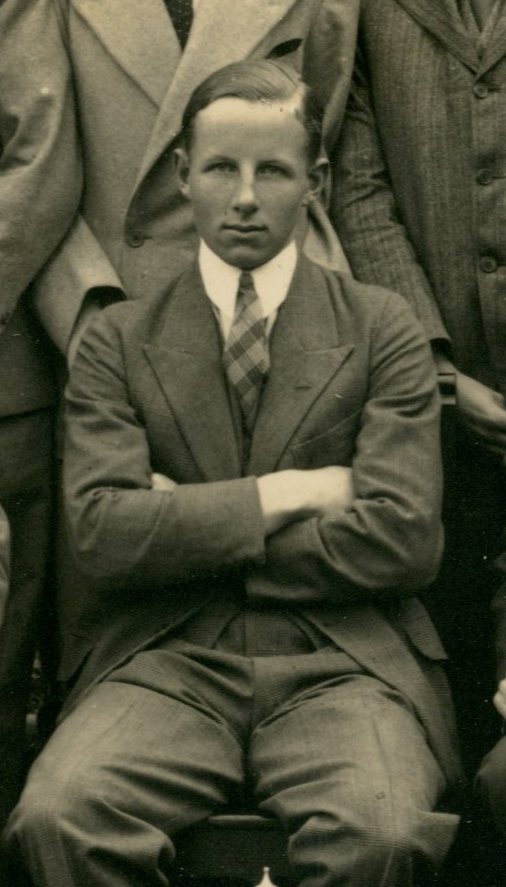Archibald Donald Mackenzie (1915–2000) was a Scottish-born man who became an unlikely but significant figure in the Italian Resistance during World War II. Born in Inverness, Scotland, on 15 June 1915, Mackenzie’s early life was rooted in the United Kingdom, but his path would lead him to Italy, where he would become involved in one of the most courageous and complex resistance movements against Nazi-Fascist occupation.
Early Life and WWII Service
Mackenzie was educated in Scotland and worked in various jobs before the outbreak of World War II. As the war began to unfold, he joined the British Army in 1939, eventually serving with the Royal Artillery. During the course of his military career, he was stationed in several locations across Europe, but it was his time in Italy that would define his legacy.
In 1943, after the fall of Mussolini’s regime and the subsequent German occupation of northern and central Italy, Mackenzie found himself posted to the region as part of the British military effort to oppose the Axis powers. As the war progressed, he became increasingly involved in anti-Fascist activities, which led him to work alongside Italian partisans.
Role in the Italian Resistance
Mackenzie’s true impact came when he became deeply involved in the Italian Resistance, specifically in the Piedmont region, where he joined the ranks of the Garibaldi Brigades—one of the largest and most influential partisan groups fighting against the Nazis and Fascists.
Mackenzie, who had become fluent in Italian during his time in the country, was able to effectively coordinate with local partisans and act as a liaison between them and the Allied forces. His skills in guerrilla warfare, learned through his military experience, proved invaluable in organising sabotage missions against the German military and Fascist collaborators. He was instrumental in organising and facilitating ambushes, sabotaging key German supply lines, and aiding in the escape of POWs and civilians who were targeted by Nazi and Fascist forces.
In 1944, Mackenzie became part of a team that helped to coordinate several successful raids on German supply depots in northern Italy, weakening the Nazis’ military infrastructure in the region. His contributions to the resistance were marked by his ability to navigate the complex and often dangerous terrain of the Italian countryside, as well as his role in building networks of safe houses and clandestine routes for the escape of persecuted civilians and prisoners.
Mackenzie was known not only for his bravery but also for his leadership and tactical ingenuity. He worked closely with Italian partisans, notably those from the **Brigate Garibaldi**, and was involved in organising covert operations that helped to turn the tide against the Nazis in key areas of Italy. His connections with the local population and knowledge of the landscape were essential to the success of many resistance operations.
Post-War Life
After the war, Mackenzie remained in Italy for some time, continuing his work with the rebuilding of the country and helping to foster better relationships between Italy and the United Kingdom. He was celebrated by his comrades and the Italian Resistance for his vital role during the war, though his name did not become widely known outside of resistance circles until years later.
Mackenzie returned to the UK after the war and lived a relatively quiet life. However, he remained committed to the memory of those who fought in the resistance, and he was often invited to participate in commemorations of the war effort. His bravery and contributions to the defeat of Fascism remained central to his legacy.
Mackenzie passed away in 2000, leaving behind a remarkable legacy as an unsung hero of the Italian Resistance.

Bibliography
- “The Italian Resistance: A Story of Freedom” by A. K. L. Alexander
This book provides a detailed overview of the various groups involved in the Italian Resistance, including the Garibaldi Brigades. It also includes stories of British and other foreign volunteers who fought alongside Italians, such as Mackenzie. - “Partisans, Patriots, and Prisoners: An Oral History of Italy’s Resistance” by L. Whitehead
This oral history collection includes the personal accounts of resistance fighters, and while it may not focus specifically on Mackenzie, it offers valuable insights into the experiences of foreign nationals like him who participated in the Italian Resistance. - “The Resistance: The Italian Partisans in World War II” by D. De Rosa
A comprehensive study on the Italian Resistance, De Rosa’s book covers the different partisan groups and their contributions, including the role of foreign fighters such as Mackenzie. - “British Volunteers in the Italian Resistance: Fighters Against Fascism” by Simon Worrall
A specialized study on the role of British volunteers in the Italian Resistance, this book highlights Mackenzie’s contributions to the fight against Nazi-Fascism. - “Fighting the Fascists: The Italian Resistance Movement, 1943-1945” by S. Benassi
This book provides a broader historical context for the Italian resistance during WWII, exploring the political and military factors that led to the uprising against the Fascists and Nazis, with references to Mackenzie’s role.
Documentaries and Films
- “The Partisans: Italy’s War Against Fascism”
A documentary series that discusses the Italian Resistance in-depth, including the roles of foreign volunteers. Episodes often highlight the contributions of British citizens like Mackenzie. - “The Italian Resistance: Fighters for Freedom”
This documentary series also focuses on the role of foreign nationals in the Italian Resistance, with specific episodes discussing the contributions of British partisans such as Mackenzie.

